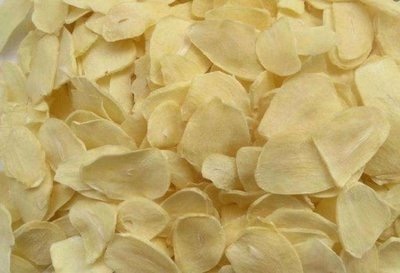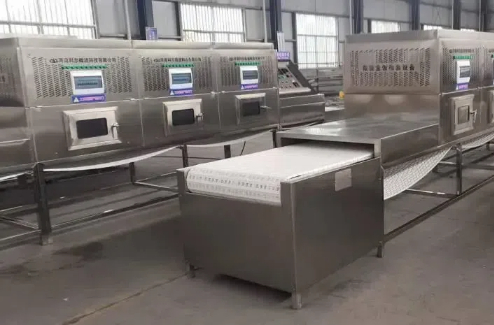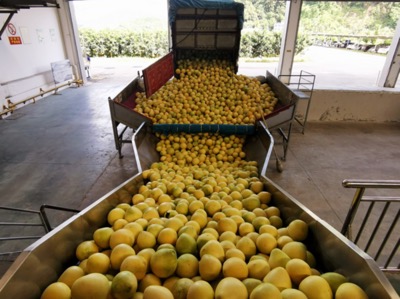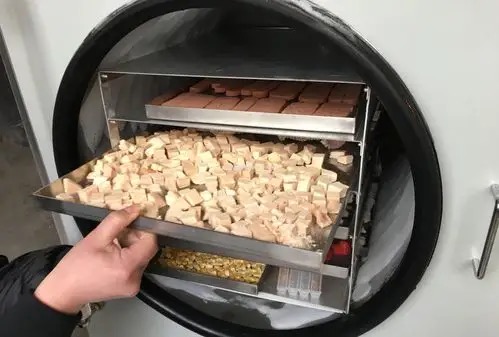
Content Menu
● Introduction
● What's A Heat Pump Dryer?
>> How Does It Work?
>> Advantages Over Traditional Drying Methods
● Benefits of Using a Heat Pump Dryer for Food Drying
>> 1. Energy Efficiency
>> 2. Gentle Drying Process
>> 3. Environmentally Friendly
>> 4. Versatility
>> 5. Reduced Operating Costs
● Applications of Heat Pump Dryers in Food Processing
>> Case Study: Dried Fruit Production
● Key Considerations When Choosing a Heat Pump Dryer
● Maintenance Tips for Heat Pump Dryers
● Conclusion
● Frequently Asked Questions
>> 1. What are the main advantages of using a heat pump dryer?
>> 2. How does a heat pump dryer differ from traditional dryers?
>> 3. Can I use a heat pump dryer for all types of food?
>> 4. What should I consider when purchasing a heat pump dryer?
>> 5. Are there any downsides to using a heat pump dryer?
Introduction
In the realm of food processing, the method of drying food has evolved significantly over the years. One of the most innovative technologies in this field is the heat pump dryer. This article will explore the benefits of using a heat pump dryer, specifically in the context of food drying, while also providing insights into its functionality and advantages over traditional drying methods.

What's A Heat Pump Dryer?
A heat pump dryer is an advanced drying system that utilizes a refrigeration cycle to remove moisture from food products. Unlike conventional dryers that rely on direct heat, heat pump dryers operate by transferring heat from one place to another, making them energy-efficient and environmentally friendly.
How Does It Work?
The operation of a heat pump dryer involves several key components:
- Evaporator: Absorbs heat from the environment and evaporates refrigerant.
- Compressor: Compresses the refrigerant gas, raising its temperature and pressure.
- Condenser: Releases heat into the drying chamber, facilitating moisture removal from food.
- Expansion Valve: Lowers the pressure of the refrigerant before it returns to the evaporator.
This cycle continues until the desired moisture content is achieved in the food product.
Advantages Over Traditional Drying Methods
Traditional drying methods, such as sun drying or hot air drying, often involve high temperatures that can degrade food quality. In contrast, heat pump dryers operate at lower temperatures, which helps retain more nutrients and flavors. This makes them particularly suitable for high-value products such as fruits, vegetables, and herbs.
Benefits of Using a Heat Pump Dryer for Food Drying
1. Energy Efficiency
One of the most significant advantages of heat pump dryers is their energy efficiency. They consume less energy compared to traditional drying methods, which can lead to substantial cost savings for food manufacturers.
For example, while conventional dryers may use upwards of 5 kWh per kg of water removed from food, heat pump dryers can achieve similar results using only 2-3 kWh per kg. This reduction in energy consumption not only lowers operational costs but also contributes to a more sustainable production process.

2. Gentle Drying Process
Heat pump dryers operate at lower temperatures, which helps preserve the nutritional quality and flavor of food products. This gentle drying process minimizes the risk of damage to delicate items like fruits and vegetables.
For instance, when drying apples or strawberries, high temperatures can lead to caramelization or loss of vibrant color. Heat pump dryers maintain optimal conditions that ensure these fruits retain their natural sweetness and appealing appearance.
3. Environmentally Friendly
By utilizing less energy and reducing greenhouse gas emissions, heat pump dryers are a more sustainable option for food processing. They contribute to a lower carbon footprint compared to conventional dryers.
Moreover, many modern heat pump dryers are designed with eco-friendly refrigerants that have low global warming potential (GWP). This further enhances their environmental benefits and aligns with global efforts towards sustainability in manufacturing processes.
4. Versatility
Heat pump dryers can be used for a wide variety of food products, including fruits, vegetables, meats, and herbs. This versatility makes them an excellent choice for manufacturers looking to diversify their product offerings.
For example:
- Fruits: Ideal for producing dried fruits like apricots or mangoes without compromising flavor or nutritional value.
- Vegetables: Effective for preserving vegetables while maintaining their color and texture; carrots and bell peppers are popular choices.
- Herbs: Gentle drying preserves essential oils and flavors in herbs like basil and thyme.
- Meats: Suitable for producing jerky or dried meats with enhanced shelf life.
5. Reduced Operating Costs
Although the initial investment in a heat pump dryer may be higher than traditional dryers, the long-term savings on energy costs often outweigh this initial expense. Additionally, their durability and low maintenance requirements contribute to reduced operating costs over time.
Applications of Heat Pump Dryers in Food Processing
Heat pump dryers are increasingly being adopted in various sectors of food processing due to their numerous advantages:
- Fruit Drying: Ideal for producing dried fruits without compromising flavor or nutritional value.
- Vegetable Drying: Effective for preserving vegetables while maintaining their color and texture.
- Herb Drying: Gentle drying preserves essential oils and flavors in herbs.
- Meat Drying: Suitable for producing jerky or dried meats with enhanced shelf life.
- Snack Production: Heat pump dryers can be used to create healthy snacks by dehydrating fruits or vegetables into chips.
Case Study: Dried Fruit Production
A case study involving a fruit processing facility demonstrated how switching from traditional hot air drying to a heat pump dryer improved product quality and reduced energy costs by 40%. The facility was able to produce higher-quality dried apricots with better color retention and taste while significantly lowering their operational expenses.
Key Considerations When Choosing a Heat Pump Dryer
When selecting a heat pump dryer for your food processing needs, consider the following factors:
- Capacity: Ensure that the dryer can handle your production volume.
- Temperature Control: Look for models with precise temperature control features.
- Energy Consumption: Evaluate energy efficiency ratings to estimate operational costs.
- Maintenance Requirements: Choose a model that offers easy maintenance and support services.
- Size and Footprint: Consider the space available in your facility for installation.
Maintenance Tips for Heat Pump Dryers
To ensure optimal performance and longevity of your heat pump dryer, regular maintenance is essential. Here are some tips:
- Regular Cleaning: Clean filters regularly to maintain airflow efficiency.
- Check Refrigerant Levels: Ensure refrigerant levels are adequate; low levels can affect performance.
- Inspect Seals: Check door seals for wear; damaged seals can lead to energy loss.
- Schedule Professional Servicing: Have your equipment serviced by professionals annually to identify potential issues early.
Conclusion
In conclusion, heat pump dryers offer numerous benefits for food processing applications. Their energy efficiency, gentle drying process, environmental sustainability, versatility, and reduced operating costs make them an attractive option for manufacturers looking to enhance their production capabilities while maintaining product quality. As technology continues to advance, we can expect even greater innovations in drying methods that will further benefit the food industry.

Frequently Asked Questions
1. What are the main advantages of using a heat pump dryer?
Heat pump dryers are energy-efficient, preserve nutritional quality, reduce operating costs, and are versatile enough to dry various types of food products effectively.
2. How does a heat pump dryer differ from traditional dryers?
Unlike traditional dryers that use direct heating methods, heat pump dryers utilize a refrigeration cycle that transfers heat efficiently while operating at lower temperatures.
3. Can I use a heat pump dryer for all types of food?
Yes, heat pump dryers are suitable for drying fruits, vegetables, meats, herbs, and more due to their gentle drying process.
4. What should I consider when purchasing a heat pump dryer?
Consider factors such as capacity, temperature control features, energy consumption ratings, maintenance requirements when selecting a model.
5. Are there any downsides to using a heat pump dryer?
While they may have higher initial costs compared to traditional dryers, the long-term energy savings and durability often justify this investment.












